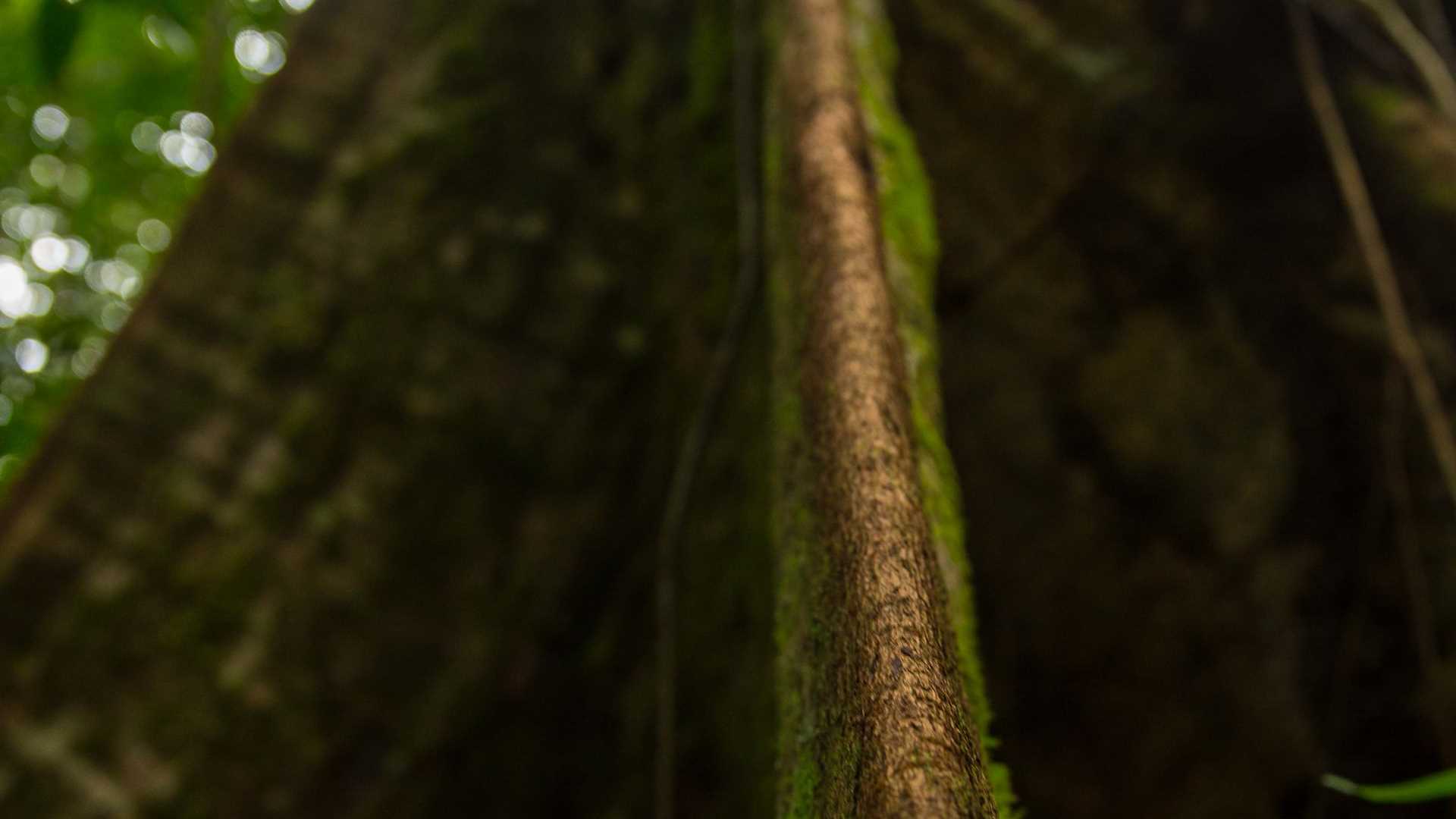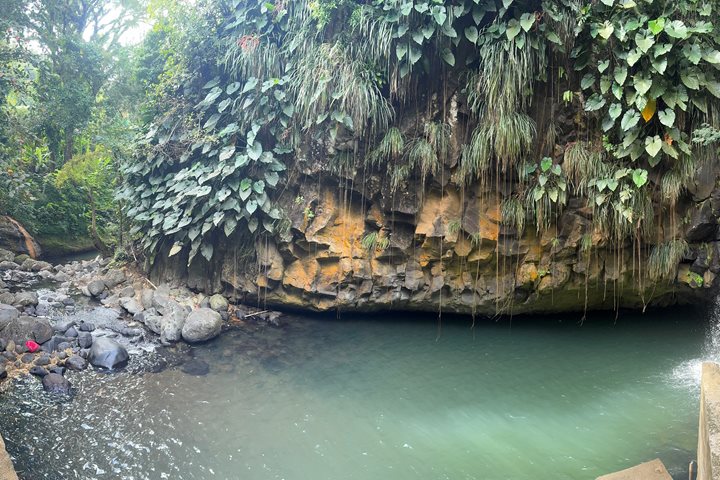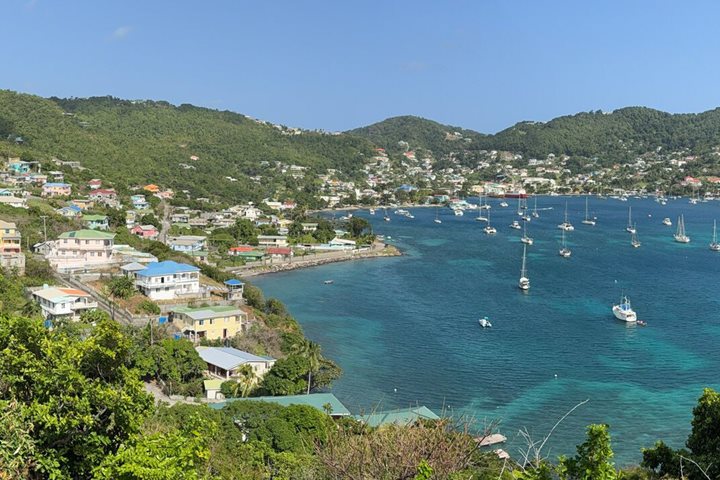We weighed anchor in Prince Rupert bay at 7:00 a.m. and motored a short distance to our dock at the base of Fort Shirley. The lush green of Dominica welcomed me once again. The island remains one of the least unspoiled of the Lesser Antilles. After breakfast we departed Sea Cloud for our drive to Morne Diabolitin (the Devil’s Mountain). In the native Kalinago language it is called Waitukubuli and means ‘the mountain’s shape resembles a young woman sleeping.’ How language defines what we see! Our drive to the rainforest took us up the mountain which rises majestically 4775 feet about sea level. We drove for 40 minutes through this lush green paradise, passing plantings of mangoes, papayas, coconuts, bananas, taro (dasheen in the local dialect), sweet potatoes, yams, coffee, and cacao. Poinsettia trees grew along the road 20 feet tall; cotons of all colors and sizes, antherium and bird of paradise grew everywhere. During our walk of 1½ miles through the rainforest we found trees with buttressing of over 100 feet in diameter. The names of the trees given both in their Latin botanical and Dominican Créole are an education in themselves. One I think particularly colorful is the infamously named “Bwa Kaka” whose wood is used for shingle roofing. The Créole spelling of the French “bois” for wood is “bwa” and “kaka” – which needs no definition -- identifies the rather noxious smell of the tree upon cutting. Epiphytes grew in profusion, as did tree ferns. Glen was our guide on our 1 ¼ mile walk through the rainforest and some of us managed to see the famous Jacko parrots.
After a scrumptious lunch of fresh locally caught dorado (mahi-mahi), Tom Heffernan gave an introductory talk on the history of Dominica (named by Columbus who spied it on Sunday – thus he called it Dies Domini “the Lord’s Day” -- 3 November 1493). Tom then led a walking tour to the restored 18th century English Fort Shirley. The fort was begun in 1774 and completed by 1778 and built entirely by local slaves of local volcanic rock. The fort is massive and spreads across most of the 200 acres of the Cabrits’ headland. Only a small part of the original has been reclaimed from the jungle. Strangler vines and jungle still suffocate the rest. The fort never saw action and existed principally as a deterrent. Designed by the 18th century American architect Peter Harrison to protect the Royal Navy at anchor in Prince Rupert Bay. The restoration of the fort (abandoned by the English in 1854) was begun by Dr. Lennox Honeychurch. Lennox is an old friend and has taken a derelict ruin covered by trees, strangler figs and jungle and turned it into a wonderful historic museum. The first English settlers on their way to found the colony of Jamestown stopped here in April of 1607.
The beautiful warm Caribbean Sea beckoned and so many of us spent a leisure hour snorkeling. Fish abound. There were parrot fish of every hue, drums, needle fish, a singular menacing lion fish (a noxious pest) and a profusion of rasses. Ian was our snorkeling instructor and made sure we all got back on board in one piece. Tea and scrumptious pastries were served until 4:45 p.m.
Dinner was under the stars on the Lido Deck. Off to bed after a full day.









